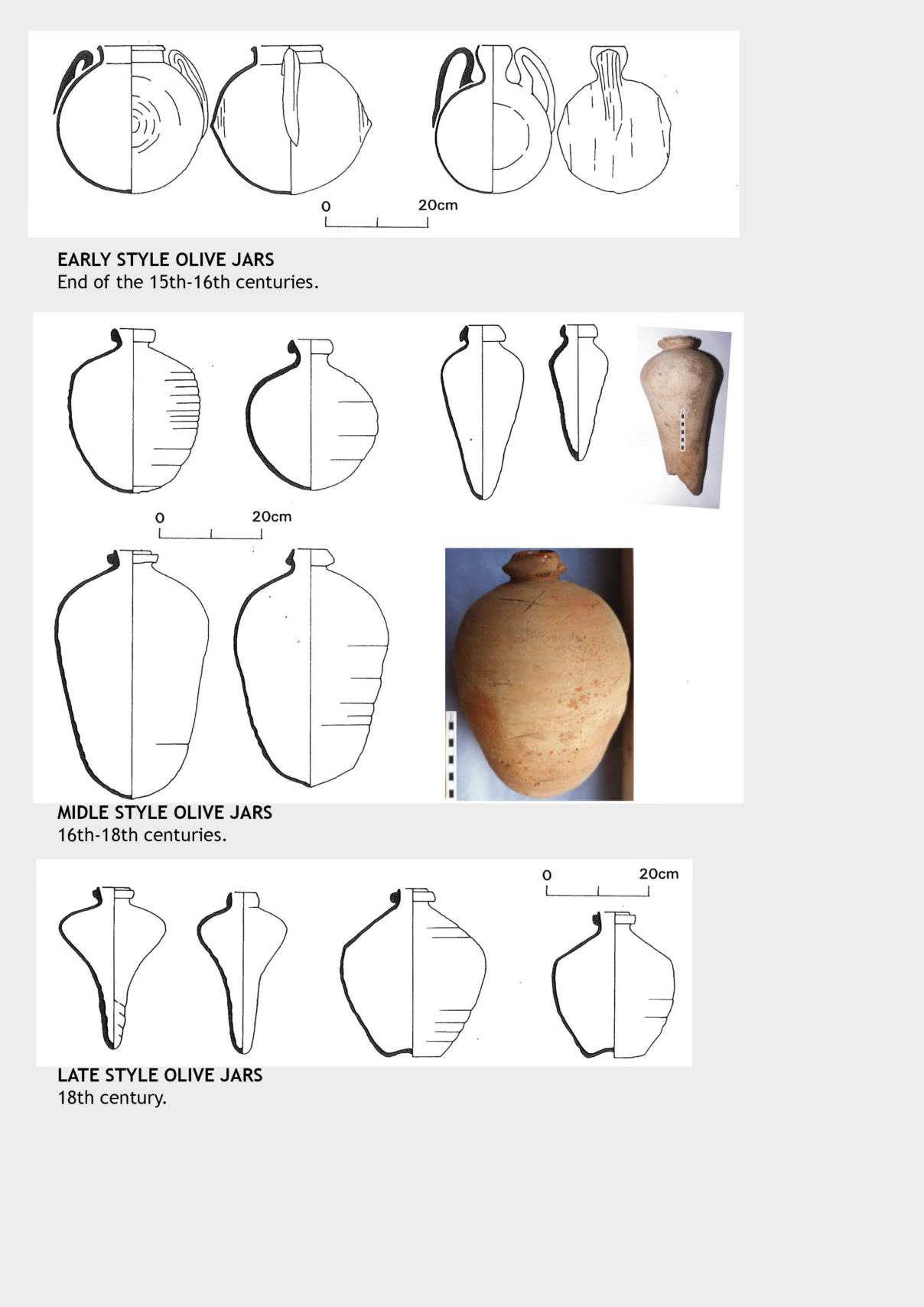Seville Olive Jar
SEVILLE : Olive Jars

The name ‘olive jar’ (botija) was coined at the beginning of the 20th century and widely accepted in the 1960s as a particular class of container. As such, the term is still used today. Taken literally, this name is a misnomer in as far as these jars were never used exclusively to carry olives.
The earliest documented jars are early 16th century, when a wide range of contents, including capers, olives, broad beans, chick peas, wine, oil and honey, were also noted in contemporary written records.

The interior surface of olive jars is sometimes white-, green– or brown-glazed, or else covered in pitch.
Fabric analyses have revealed inclusions of white and black mica characteristic of south-west Spain and confirmed some variety in the fabrics. This suggests that a number of production centres was involved in their production, not only in the city of Seville but also at unrecognised centres in the near vicinity and on the south coast. These centres remain to be identified and the term ‘Seville-type’ olive jar is therefore preferred.
Several forms were produced, some carrying dating significance.

